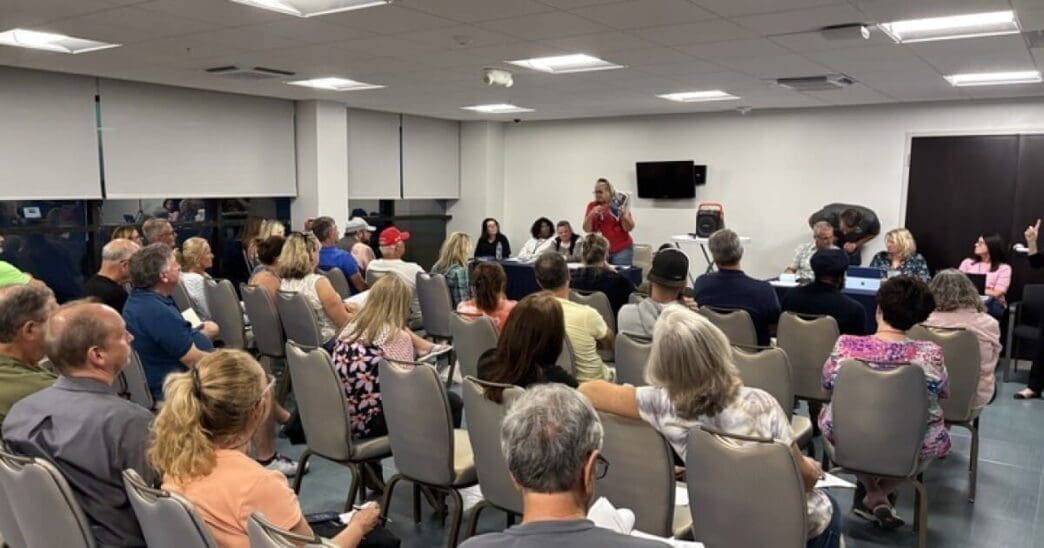In Treasure Island, Kathy Miller and Linda Martin face an unexpected challenge with their home significantly damaged by Hurricane Helene. The city convened a meeting with FEMA, the city staff, and the Florida Division of Emergency Management to explain the FEMA 50% rule, which impacts repair decisions for flood-damaged homes.
Kathy Miller and her partner, Linda Martin, find themselves in a predicament following the aftermath of Hurricane Helene. Their home, for the first time, faced flooding, leaving them uncertain about the next steps. ‘We just don’t know what we’re going to do,’ Miller expressed, highlighting their state of uncertainty amidst numerous questions surrounding the possibility of home repairs.
The meeting held at the Treasure Island City Hall aimed to provide insights into the FEMA 50% rule. For homeowners in flood hazard areas, if a property is deemed ‘substantially damaged,’ repair work is restricted unless the costs are below 50% of the home’s value. Reaching or exceeding this threshold means owners must either elevate or reconstruct their homes, creating a significant barrier for many.
The assessment process initiated by Treasure Island city staff involves contractors evaluating homes for substantial damage. Two teams are actively conducting approximately 100 home assessments daily, including weekends, indicating the urgency of the situation. The completion of these evaluations will take several weeks, during which homeowners like Miller and Martin remain in a waiting period.
If a home is not considered substantially damaged, the city will proceed to review and approve repair permits. Affected homeowners can appeal if their property is classified as substantially damaged, a recourse Miller and Martin are contemplating due to the apparent severity of their home’s condition.
For those who find their homes significantly compromised, the reality of possibly having to abandon their domiciles looms. ‘It’s really hard to even think about leaving it, but we have to be realistic about what has happened and our ability to recover from that,’ Martin noted, reflecting the difficult emotional and practical considerations involved.
The city plans to notify homeowners of damage assessments via mail, although updates can also be obtained through city hall communications. The stakes for Treasure Island are high because non-compliance with the rule could affect the city’s standing with the National Flood Insurance Program.
The process for determining repair costs includes inputs from Pinellas County, which assists in setting labor rates and other standards. The county collaborates with Treasure Island, utilizing tools provided by FEMA to ensure accurate cost estimations based on local market conditions. Inspectors may visit homes unannounced, conducting assessments from outside if necessary.
Homeowners in Treasure Island are navigating a complex landscape as they await clarity on the future of their properties post-Hurricane Helene. This situation underscores the challenges faced by communities in flood-prone areas, grappling with regulatory requirements and potential financial burdens. While residents like Kathy Miller and Linda Martin hope for favorable outcomes, the broader implications for the community’s infrastructure and resilience remain significant.
Source: ABC Action News








